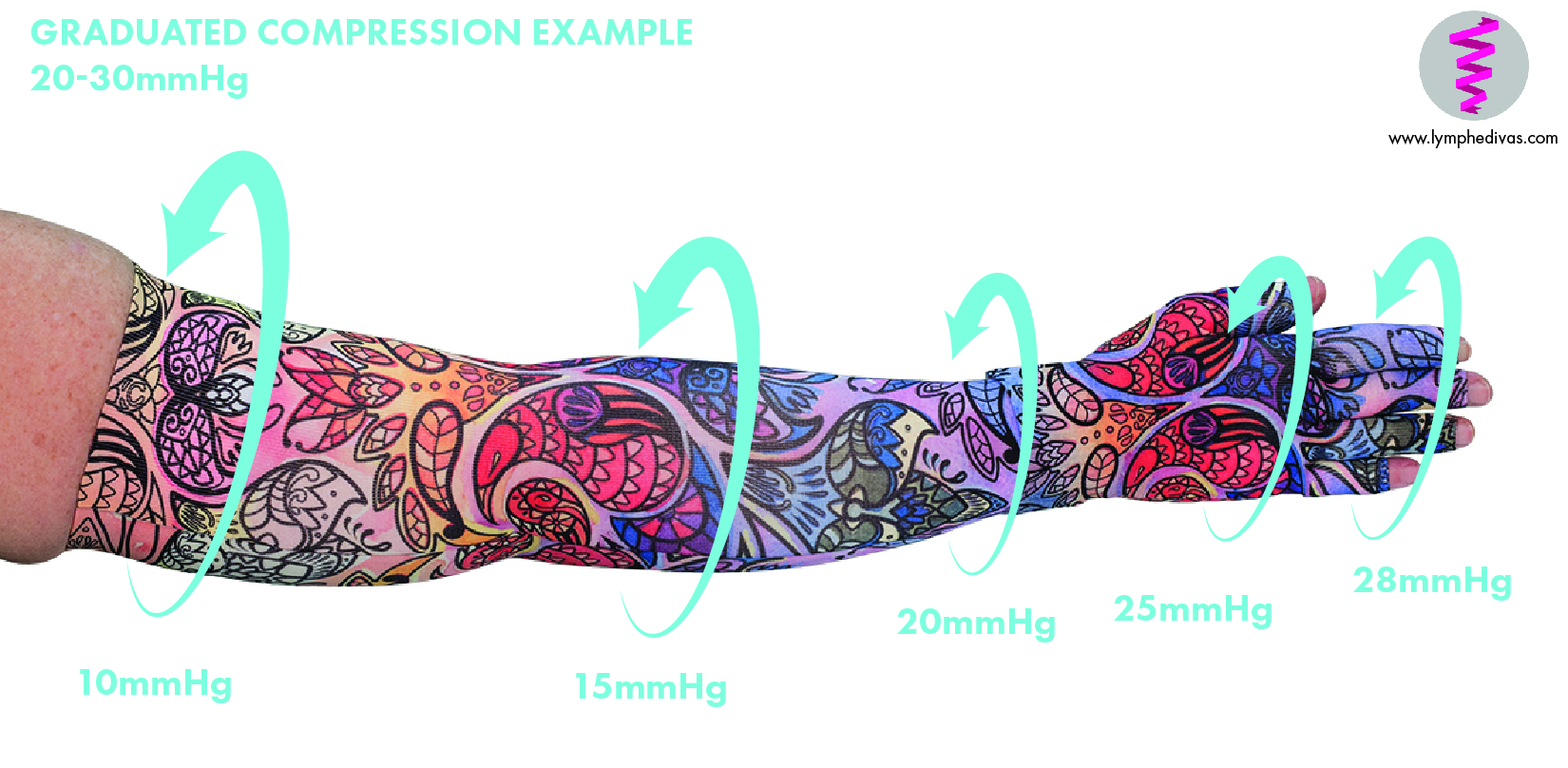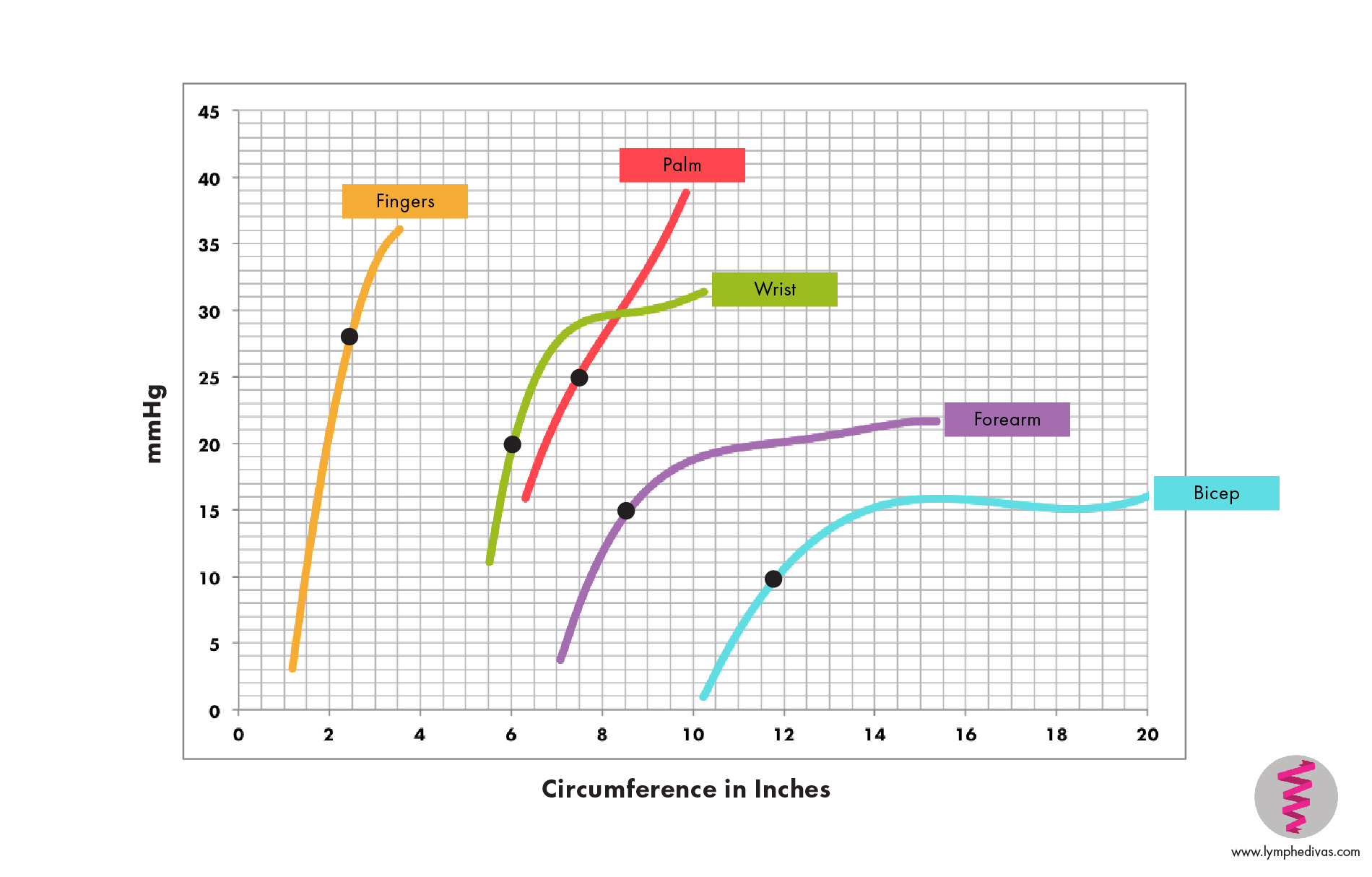Medical graduated compression garments are often a part of lymphedema therapy. Each medical graduated compression garment is assigned a compression class which determines how much pressure that garment delivers. In the United States, Class 1 is defined as 20-30mmHg, which means that the garment provides between 20 to 30 millimeters of mercury at the point of highest pressure. A Class 1, 20-30mmHg, arm sleeve would have between 20-30mmHg at the wrist, and then the pressure would decrease gradually up the arm. The purpose of a graduated compression garment is to provide pressure that is highest at the most distal point of the body and decreases toward the heart to aid in pumping lymph fluid toward the body. Pressure from the compression garments helps to circulate lymphatic fluid and reduces lymphatic fluid stagnation which can cause the onset of or advancement of lymphedema.

In this very idealized example, 20-30mmHg graduated compression glove and arm sleeve should look like this:
Fingers: 28mmHg
Palm: 25mmHg
Wrist: 20mmHg
Forearm: 15mmHg
Bicep: 10mmHg
In LympheDIVAs garments the glove delivers compression in the fingers and palm, the gauntlet delivers compression in the palm, and our arm sleeve delivers compression in the wrist, forearm, and bicep. However, please be aware that some manufacturers do provide gloves and gauntlets that provide compression at the wrist in addition to the fingers and palm. This can be an issue because if one of these gauntlets or gloves is worn with an arm sleeve, then there is double compression at the wrist which will result in a garment combination that does not yield graduated compression and can adversely affect lymphedema.
What compression class do I need? Unfortunately, the level of pressure that may be necessary to manage one’s lymphedema is very individual to the person and includes (but is not limited to) factors such as what type of therapy is performed in addition to wearing compression garments, the shape of the arm and/or location of the swelling, and the staging of lymphedema. As a rule of thumb, lower the number = lower the pressure; a 20-30mmHg garment delivers less compression than a 30-40mmHg. When it comes to pressure and lymphedema, more pressure isn’t always better, be sure to seek professional medical input when deciding on compression level for your garments.
What garments do I need? Do I really need a gauntlet/glove? Our Medical Advisors recommend hand compression to be worn with an arm sleeve. Since graduated compression works by moving fluid from an area of high pressure to an area of low pressure then you want to be sure that your hand is protected and has higher pressure than the wrist. Otherwise, the compression at the wrist can cause the fluid to move from an area of high pressure (the wrist) into an area with no pressure (the palm). If you have existing swelling in your hand and/or fingers, be sure to discuss this with your doctor or therapist, they will be able to examine you and determine whether a gauntlet or glove may be beneficiary.

The science behind medical compression garments lead us to develop the Fitter’s Aid app. The app provides approximate compression at each measuring point. When you enter your measurements into the Fitter’s Aid app and indicate your desired compression class, as indicated by your doctor or therapist, the Fitter’s Aid can then provide an estimated level of pressure at each measuring point and make a sizing recommendation that delivers graduated compression based on the criteria provided.
